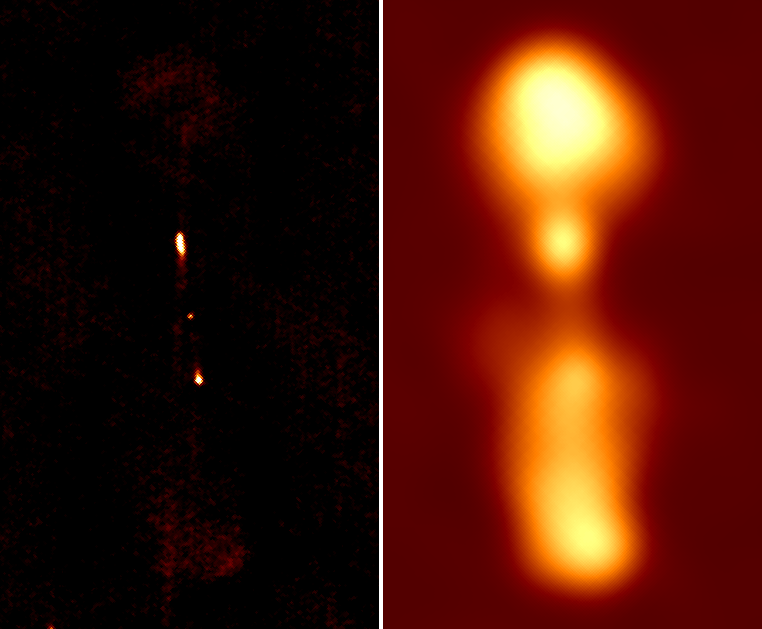Project area/S
- Extragalactic radio science
- The distant universe
Project Details
Radio galaxies are radio-bright sources formed by powerful jets flowing out from the accretion disks of galactic supermassive black holes: active galactic nuclei. The jets switch off and on, and the black hole and accretion disk can precess, and the medium into which the jets flow can be quite different from galaxy to galaxy. Thus, beyond the simple expected pair of symmetric radio-bright lobes, there are a wide variety of radio galaxy morphologies including galaxies with two, three, or even more pairs of lobes expanding outward from the centre. In this project, the student will examine about 1,000 radio galaxies at low and high frequencies to count the number of phases of emission ob-served in these “restarting” radio galaxies. Using resolved spectral index mapping code to look at the changes in brightness across the radio galaxy as a function of frequency, they will also measure the age of the plasma in different lobes. We can use this information to work out how often jets are on and off, and see if this changes as a function of galaxy type, brightness, or mass.
Student Attributes
Academic Background
Knowledge of astronomical co-ordinate systems (RA, Dec); basic understanding of large-scale structure of the Universe; i.e. 2nd year astronomy or above.
Computing Skills
Bash and python would be desirable, but any programming experience would be fine. Ability to use basic Linux command-line and text editor such as vi, nano, or emacs.
Training Requirement
Optimise an efficient viewing setup for examining radio galaxy emission, and recording the results in a way that can be statistically analysed. Plotting data with python and matplotlib. Statistical analysis of a rich dataset.
Project Timeline
- Week 1 Inductions and project introduction
- Week 2 Initial Presentation
- Week 3 Training on display software and selection of software to record the data; reading about radio galaxy morphologies and existing work
- Week 4 Examine radio galaxy morphologies and record information
- Week 5 Resolved spectral index mapping
- Week 6 Literature search on interesting candidates
- Week 7 Synthesise the information into astrophysical conclusions
- Week 8 Compare conclusions with other efforts in the literature
- Week 9 Final Presentation
- Week 10 Final Report


